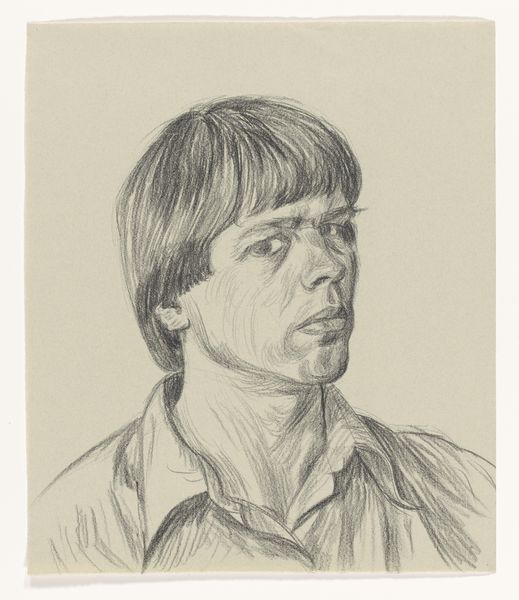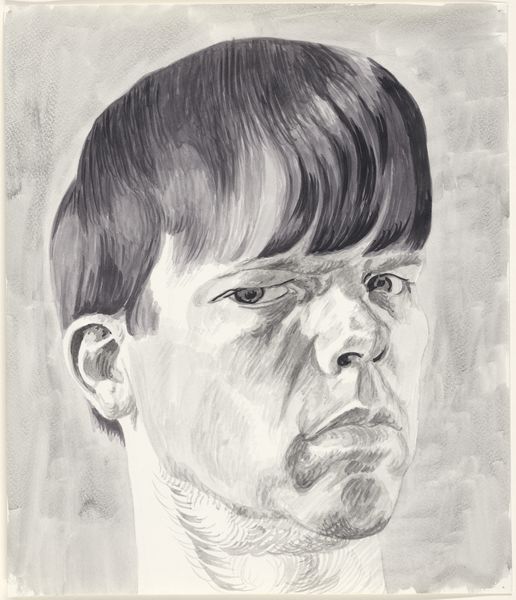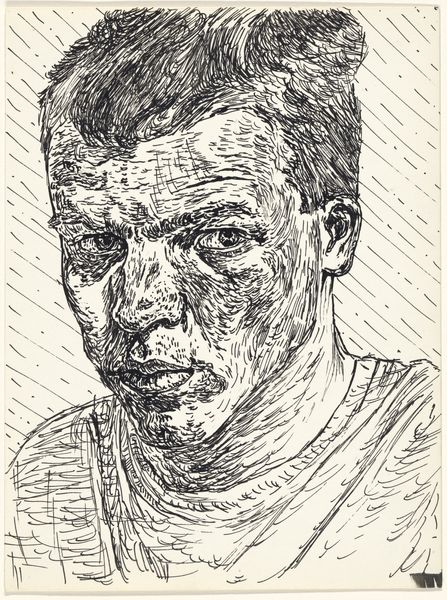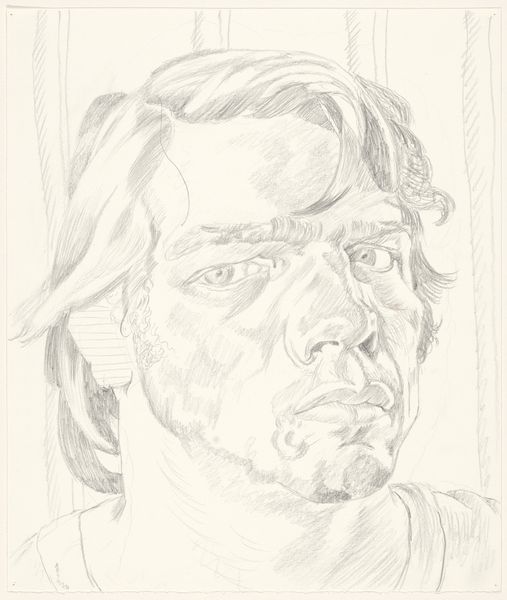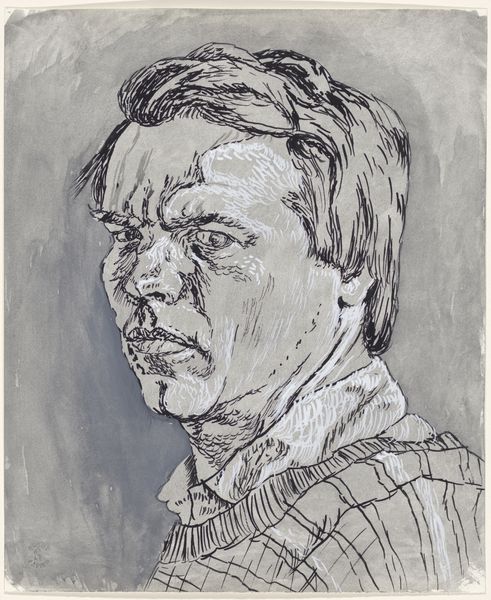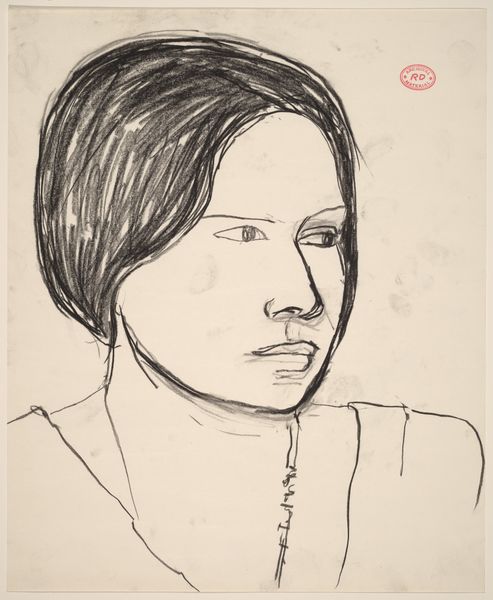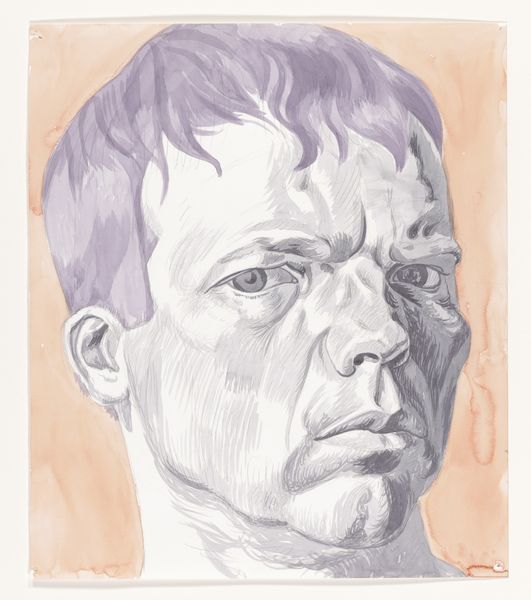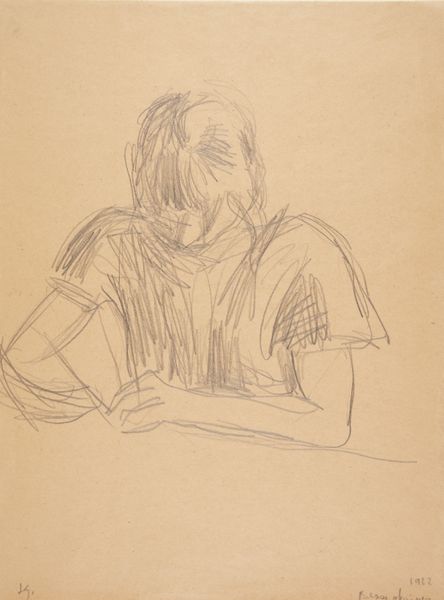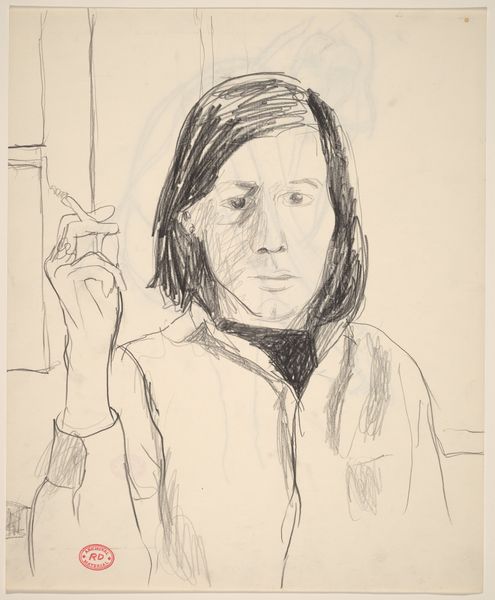
drawing, pen
#
portrait
#
drawing
#
caricature
#
figuration
#
pen
#
modernism
Dimensions: height 405 mm, width 330 mm
Copyright: Rijks Museum: Open Domain
Curator: What strikes me first is the sheer intensity of this pen drawing by Philip Akkerman. It’s titled "Self-portrait 1987 no. 26," part of an extensive series the artist devoted to exploring his own likeness. Editor: Intense is one word, yes. The linear hatching creates this incredible textural depth. I can't help but focus on the materials – pen on paper, seemingly simple, but he coaxes so much out of it. Curator: Absolutely. Look at the economy of line, and the way the hatching almost becomes a web that entraps the figure. It reflects Akkerman's intensive labor of portraiture, particularly his focus on serial self-portraiture and it definitely challenges conventional ideas of labor and artistic obsession. Editor: The construction of the face is definitely noteworthy. The angle of the head, the way the features are subtly distorted – there's a deliberate unidealization at play. It challenges notions of traditional portraiture in the purest sense. It makes you question what exactly Akkerman sees when he’s gazing at his own image. Curator: He often exaggerated features, distorting his likeness into caricatures. Perhaps the distorted, almost unsettling portrayal can be viewed through the lens of societal and artistic expectations of self-representation? It makes one wonder whether Akkerman uses repetition and the exaggeration of lines to critique representation. Editor: I see that. It goes beyond simple likeness. It's the tension between representation and abstraction that draws me in. Also, the cross-hatching almost flattens the figure into the background at the same time it emphasizes dimensionality. I agree it feels like he’s constantly deconstructing and rebuilding. Curator: Considering the social and historical climate of the late 1980s, where consumerism and superficiality were heavily critiqued in the arts, perhaps these portraits are visual commentary on those values through art’s means of production and material engagement. Editor: A very fair point, but when I move away from the social reading of it, the raw impact of this modernist image pulls me in. It’s more than just commentary. Curator: Well, there is a fascinating conversation to be had about where and how commentary takes form in art! Editor: Precisely! Perhaps it’s in the eye of the beholder, quite literally in this case.
Comments
No comments
Be the first to comment and join the conversation on the ultimate creative platform.
